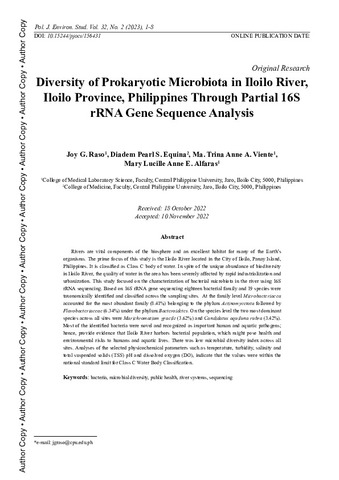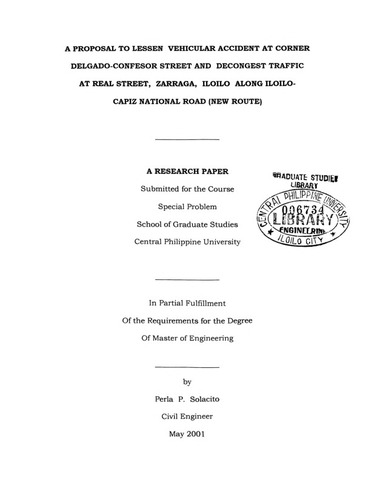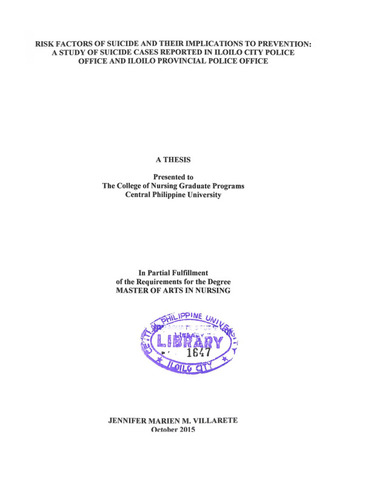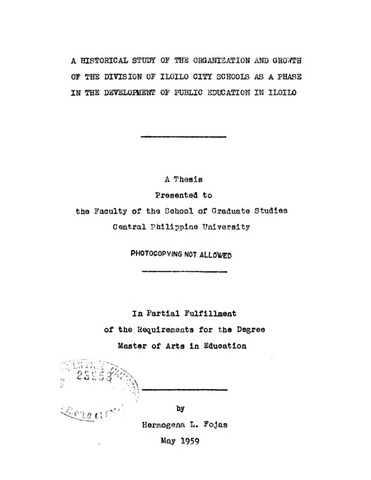Diversity of prokaryotic microbiota in Iloilo River, Iloilo Province, Philippines through partial 16S rRNA gene sequence analysis
| dc.contributor.author | Raso, Joy Gayares | |
| dc.contributor.author | Equiña, Diadem Pearl S. | |
| dc.contributor.author | Viente, Ma. Trina Anne A. | |
| dc.contributor.author | Alfaras, Mary Lucille Anne E. | |
| dc.coverage.spatial | Iloilo | en_US |
| dc.date.accessioned | 2023-02-21T07:47:24Z | |
| dc.date.available | 2023-02-21T07:47:24Z | |
| dc.date.issued | 2023-02 | |
| dc.identifier.citation | Raso, J. G. , Equiña, D. P. S. , Viente, M. T. A. A. , Alfaras, M. L. A. E. (2023). Diversity of Prokaryotic Microbiota in Iloilo River, Iloilo Province, Philippines Through Partial 16S rRNA Gene Sequence Analysis. Polish Journal of Environmental Studies. https://doi.org/10.15244/pjoes/156431 | en_US |
| dc.identifier.issn | 1230-1485 | |
| dc.identifier.uri | https://hdl.handle.net/20.500.12852/2484 | |
| dc.description | Journal article | en_US |
| dc.description.abstract | Rivers are vital components of the biosphere and an excellent habitat for many of the Earth’s organisms. The prime focus of this study is the Iloilo River located in the City of Iloilo, Panay Island, Philippines. It is classified as Class C body of water. In spite of the unique abundance of biodiversity in Iloilo River, the quality of water in the area has been severely affected by rapid industrialization and urbanization. This study focused on the characterization of bacterial microbiota in the river using 16S rRNA sequencing. Based on 16S rRNA gene sequencing eighteen bacterial family and 19 species were taxonomically identified and classified across the sampling sites. At the family level Microbacteriacea accounted for the most abundant family (8.41%) belonging to the phylum Actinomycetota followed by Flavobacteriaceae (6.34%) under the phylum Bacteroidetes. On the species level the two most dominant species across all sites were Marichromatium gracile (3.62%) and Candidatus aquiluna rubra (3.42%). Most of the identified bacteria were novel and recognized as important human and aquatic pathogens; hence, provide evidence that Iloilo River harbors bacterial population, which might pose health and environmental risks to humans and aquatic lives. There was low microbial diversity index across all sites. Analyses of the selected physicochemical parameters such as temperature, turbidity, salinity and total suspended solids (TSS) pH and dissolved oxygen (DO), indicate that the values were within the national standard limit for Class C Water Body Classification. | en_US |
| dc.description.sponsorship | Central Philippine University | en_US |
| dc.language.iso | en | en_US |
| dc.publisher | HARD Publishing Company | en_US |
| dc.relation.uri | http://www.pjoes.com/pdf-156431-87408?filename=Diversity%20of%20Prokaryotic.pdf | en_US |
| dc.subject.lcsh | Bacteria | en_US |
| dc.subject.lcsh | Microbial diversity | en_US |
| dc.subject.lcsh | Public health | en_US |
| dc.subject.lcsh | Watersheds | en_US |
| dc.subject.lcsh | Environmental management | en_US |
| dc.subject.lcsh | Philippines--Iloilo (Province) | en_US |
| dc.subject.lcsh | Philippines--Iloilo River (Panay Island) | en_US |
| dc.title | Diversity of prokaryotic microbiota in Iloilo River, Iloilo Province, Philippines through partial 16S rRNA gene sequence analysis | en_US |
| dc.type | Article | en_US |
| dcterms.accessRights | Publicly accessible | en_US |
| dc.citation.firstpage | 1 | en_US |
| dc.citation.lastpage | 8 | en_US |
| dc.citation.journaltitle | Polish Journal of Environmental Studies | en_US |
| dc.citation.volume | 32 | en_US |
| dc.citation.issue | 2 | en_US |
| local.subject | River systems | en_US |
| local.subject | Sequencing | en_US |
| local.subject | Water monitoring | en_US |
| local.subject | Iloilo River | en_US |
| dc.identifier.doi | 10.15244/pjoes/156431 | |
| dc.identifier.essn | 2083-5906 |
Files in this item
This item appears in the following Collection(s)
-
Journal articles [36]





